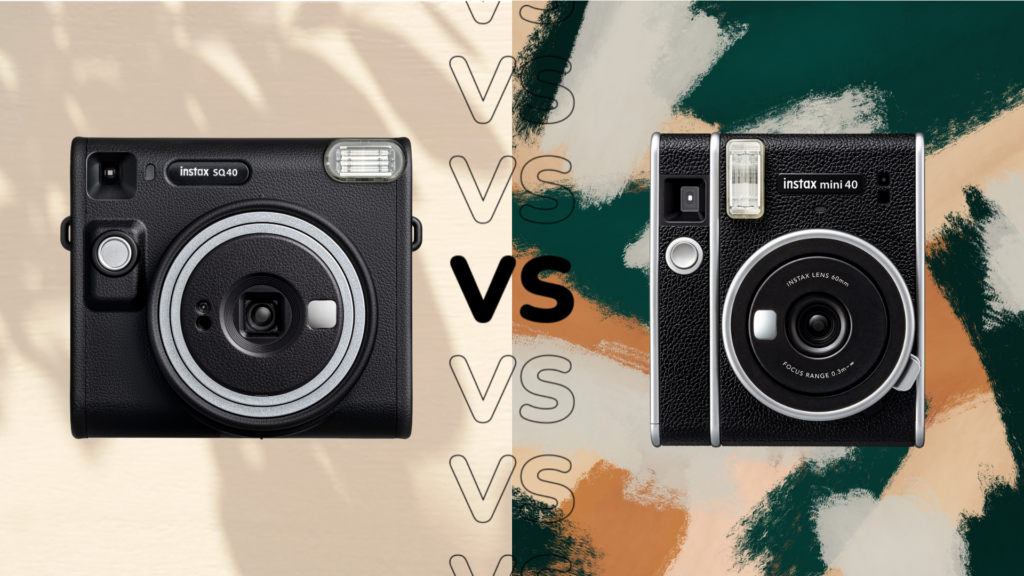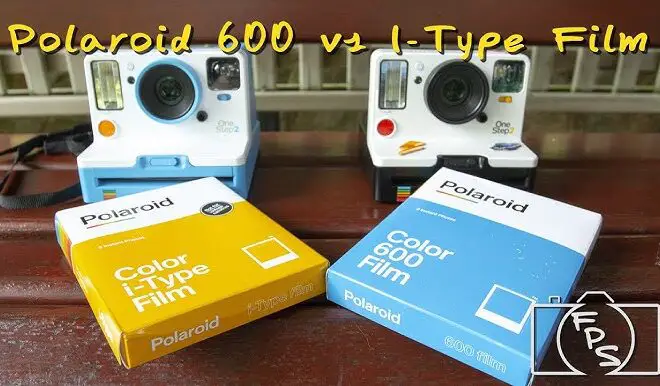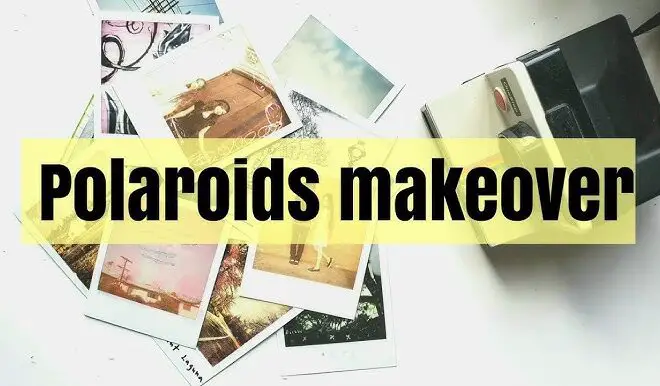
Instax square vs mini
As an Amazon Associate, I earn from qualifying purchases.
Instax square vs mini
Introduction
The Instax Square and Instax Mini are two popular formats of instant film cameras from Fujifilm, each with distinct features that cater to different preferences.
Instax Square
- Image Format: The photos have a square format (62mm x 62mm), similar to the classic Polaroid style, offering a nostalgic and balanced aesthetic.
- Camera Size: Slightly larger than the Instax Mini cameras, making them a bit bulkier to carry around.
- Film Cost: Typically more expensive than Instax Mini film.
- Appeal: Great for those who appreciate the classic square format and want more room in their shots, making it ideal for portraits and detailed photos.
- Popular Models: Instax Square SQ6, SQ1, and SQ40.
Instax Mini
- Image Format: The photos have a rectangular format (62mm x 46mm), which is smaller and more compact.
- Camera Size: Generally more compact and lightweight, making them easier to carry around.
- Film Cost: Generally cheaper than Instax Square film, making it a more budget-friendly option.
- Appeal: Ideal for casual snapshots, selfies, and creating a fun and easy-to-share photo experience. The smaller size also makes them great for wallets or small frames.
- Popular Models: Instax Mini 11, Mini 12, and Mini Evo.

Key Differences
- Photo Size: Instax Square provides a larger, square photo compared to the smaller, rectangular Instax Mini photos.
- Camera Size and Portability: Instax Mini cameras are generally more portable due to their smaller size.
- Cost: Instax Mini film is typically more affordable, making it a good choice for those who plan to take a lot of pictures.
- Aesthetic: If you prefer a classic, vintage look, the Instax Square might appeal more due to its Polaroid-like square format.
Choosing Between the Two
- Instax Square: Opt for this if you like the square format and don’t mind a slightly larger camera and higher film cost for a more classic look.
- Instax Mini: Choose this if you prefer a more portable, budget-friendly option with smaller prints that are easy to share and carry around.

Instax square pros and cons
Pros
- Square Format:
The 1:1 aspect ratio is visually pleasing, providing a more balanced composition for many types of shots (similar to vintage Polaroids).
Offers a unique artistic feel, especially for portraits and social media.
Larger Image Size:
Instax Square film is larger than Instax Mini, providing more detail and a bigger print to enjoy (62mm x 62mm image area).
Classic Aesthetic:
Combines modern technology with a retro look, making it appealing for vintage photography lovers.
Variety of Models:
Instax Square cameras like the SQ1 are easy to use, while the SQ6 or SQ20 offer more advanced features, including digital hybrid functions (for editing and choosing prints).
Hybrid Options:
Hybrid models like the Instax Square SQ20 let you take digital photos, select the best shots, and then print them—saving film and reducing waste.
Instant Gratification:
Just like other instant cameras, you get a physical print in minutes, which makes the process of taking and sharing photos fun and tangible.
Film Availability:
Instax Square film is widely available, making it easier to restock, unlike some vintage instant films.
Cons
- Cost:
Both the cameras and the square film can be expensive compared to standard digital photography or even other instant formats (e.g., Instax Mini).
Film refills typically cost more per shot than Instax Mini films.
Bulky Design:
Many Instax Square cameras are bigger and bulkier than the Instax Mini models, making them less portable.
Limited Advanced Features:
While some models offer hybrid digital features, most of the basic square models lack advanced camera settings (like manual exposure or focus).
Film Sensitivity:
Instax film can be sensitive to light and handling. Overexposure or underexposure may waste a frame, as it prints automatically.
Developing Time:
While the developing time is relatively short, the images do take a few minutes to fully develop, which can feel slow for some users.
Fixed Lens:
Many models have fixed lenses, which limit the camera’s flexibility in terms of zoom or focus options. This can be limiting for professional users or those looking for more control.
No Digital Storage (For Non-Hybrid Models):
Unlike digital cameras, non-hybrid Instax Square cameras don’t offer the ability to store digital copies of your photos, so if you mess up a shot, it’s wasted film.
Instax mini pros and cons
Pros
- Compact Size:
The camera and the prints are small and portable, making the Instax Mini series very easy to carry around.
The film size (54mm x 86mm, with a 46mm x 62mm image area) is similar to a credit card, which is convenient for storage or sharing.
Affordable Camera Options:
Instax Mini cameras are generally cheaper than other instant camera formats, like the Instax Square or Instax Wide.
They offer great value for beginners or casual users.
Wide Range of Models:
There’s a diverse selection of cameras, from basic models like the Mini 11 to more advanced or stylish options like the Mini LiPlay or Mini 40.
Some models include features like selfie mirrors, close-up modes, and brightness adjustment, which improve the ease of use.
Quick Prints:
The prints develop within minutes, providing immediate satisfaction.
Film Availability:
Instax Mini film is widely available, easy to find in stores or online, and comes in a variety of styles (color, black & white, themed borders, etc.).
Creative and Fun:
The small prints are fun for creative projects like scrapbooking, journaling, or party souvenirs.
Models with built-in filters or the option to customize your prints (Mini LiPlay) add a playful, artistic element to the photography experience.
Good for Beginners:
The simple, point-and-shoot design makes it perfect for users who want to focus on fun rather than complicated settings or controls.
Cons
- Small Print Size:
The prints are relatively small (smaller than the Instax Square or Instax Wide), which might be limiting for those looking for larger, more detailed photos.
Less suitable for group photos or wide landscapes where more detail is needed.
Cost of Film:
Although the cameras are affordable, the cost of film can add up over time, especially since each shot is a one-time opportunity with no do-overs.
On average, each shot costs around $0.70 to $1.00, which can be expensive for frequent use.
No Digital Copies (For Non-Hybrid Models):
Unlike digital cameras or hybrid instant cameras, the standard Instax Mini models don’t provide a digital backup of your photos. Once the film is exposed, that’s your only copy.
Limited Features:
Basic Instax Mini models lack advanced photography settings like manual exposure control, focus adjustments, or zoom, which may frustrate users looking for more control over their shots.
Film Wastage:
Since there’s no digital preview, you may waste film on poorly framed, underexposed, or overexposed shots.
There’s no way to delete or review photos before printing.
Battery Reliance:
Most Instax Mini cameras are battery-operated, so you’ll need to keep spare batteries on hand to avoid running out of power during use.
Sensitive to Lighting Conditions:
Instax Mini film can be very sensitive to lighting, and shots taken in poor lighting may not turn out well unless the camera has built-in exposure correction or flash.
Bulky for Some Users:
While the camera itself is small and portable, it can feel a bit bulky compared to other digital point-and-shoot cameras or even smartphones.
READ ALSO: What does s mean on instax mini 9?
FAQs
What is the difference between Instax Mini and Square picture size?
Instax Mini Picture Size:
Dimensions: 62mm x 46mm (2.4″ x 1.8″)
Aspect Ratio: 5:3 (rectangular)
Shape: Portrait orientation, similar to a credit card size.
Instax Square Picture Size:
Dimensions: 62mm x 62mm (2.4″ x 2.4″)
Aspect Ratio: 1:1 (square)
Shape: Perfect square, similar to classic Polaroid prints.
Can Instax square work with Instax Mini?
No, Instax Square film cannot work with Instax Mini cameras, and vice versa. Each camera is designed specifically to work with its corresponding film format:
Instax Square Cameras are designed to use Instax Square film, which has a square format (62mm x 62mm).
Instax Mini Cameras are designed to use Instax Mini film, which has a rectangular format (62mm x 46mm).
The size and shape of the film, as well as the mechanisms inside the cameras that handle the film, are different between the two formats. Attempting to use the wrong type of film in a camera could result in damage to the camera or the film, and it won’t produce usable photos. Therefore, it’s important to use the correct film type that corresponds to your specific Instax camera model.
Which is better, Instax Mini or Instax square?
Choose Instax Mini if you want a compact, budget-friendly option that’s great for fun, casual photography, and easy sharing.
Choose Instax Square if you prefer larger prints with a classic, artistic look, and don’t mind the larger camera size and higher film cost for better quality and display potential.
Ultimately, the “better” option depends on your specific needs and what you value more in instant photography—portability and cost-effectiveness (Instax Mini) or image size and classic style (Instax Square).



